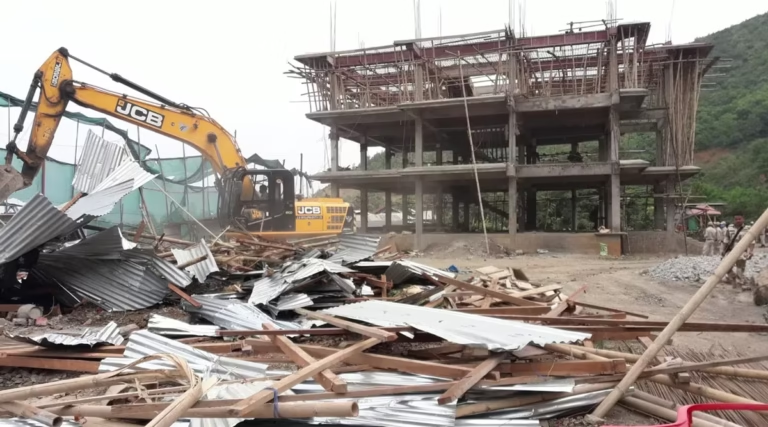Manipur Police Arrest Four, Seize Large Arms Cache
Manipur Police arrested four people linked to a previously little-known group called the Keishal Village Volunteer Organisation during coordinated operations in the Imphal valley on August 31 / September 1, 2025. Officers recovered a huge cache: 17 firearms (including AK-type and INSAS/SLR rifles), over 1,000 rounds of ammunition, three hand grenades, 55 magazines, communication gear, bulletproof plates and camouflage helmets. Police named the four arrested as Rajkumar Sidharth alias Momo (33), Laishram Rameshor Meitei (44), Athokpam Brojendro Singh (45) and Laishram Sachikanta Singh (25) and said the operatives belonged to the newly noticed Keishal outfit.
The immediate facts — arrests, names and the haul
Manipur Police say they arrested four individuals associated with a group identified as the Keishal Village Volunteer Organisation during coordinated operations in Imphal valley. The four named by police are Rajkumar Sidharth (alias Momo, 33), Laishram Rameshor Meitei (44), Athokpam Brojendro Singh (45) and Laishram Sachikanta Singh (25). Authorities reported the recovery of 17 firearms — including AK-type rifles, AK Ghatak variants, INSAS rifles, SLRs, 9 mm carbines and .303 rifles — along with over 1,000 rounds of ammunition, three hand grenades (one reportedly of Chinese origin), 55 magazines, eight handheld radio sets with spare batteries, bulletproof plates, and camouflage helmets.
Who — or what — is the Keishal Village Volunteer Organisation?
One of the striking lines in police and media statements is that the Keishal Village Volunteer Organisation (KVVO) was “unheard of” prior to these arrests. In security parlance, that raises two possibilities: either this is a brand-new local militia being formed (a “grassroots” outfit), or it’s a cover name for more established actors who are trying to operate under a different label to avoid detection. Both scenarios have different implications.
The weapons and kit — reading the inventory
A list of recovered items tells a story. The mix of AK-pattern rifles (reliable, common in many conflict zones), INSAS / SLRs (Indian-designed/issued rifles), 9 mm carbines, .303 rifles, hand grenades, magazines, communication sets, and body armour suggests the cache was intended to outfit a small, well-equipped platoon — not a lone gunman. That implies planning for sustained operations: mobility, firepower, communications and some degree of protection.
Two takeaway inferences:
- Capability: This group could have planned offensive operations or needed the weapons for security/territory control.
- Logistics: Transporting and storing 17 firearms and 1,000+ rounds isn’t trivial — it needs space, money and a chain of custody, which investigators will want to trace.
FAQs (Five Unique Questions & Answers)
Q1 — Exactly what was seized and who were the arrested?
A1 — Police reported 17 firearms (including AK-type rifles, AK Ghatak variants, INSAS rifles, SLRs, 9 mm carbines and .303 rifles), over 1,000 rounds of ammunition, three hand grenades, 55 magazines, multiple handheld radio sets, bulletproof plates and camouflage helmets. The four arrested were named as Rajkumar Sidharth (alias Momo), Laishram Rameshor Meitei, Athokpam Brojendro Singh, and Laishram Sachikanta Singh.
Q2 — What is the Keishal Village Volunteer Organisation?
A2 — Police said the suspects belonged to the Keishal Village Volunteer Organisation, a group that was not publicly known before this operation. Investigators are probing whether it is a newly formed local militia or an alias used by an existing network.
Q3 — Could these weapons be linked to prior incidents in Manipur?
A3 — Authorities will attempt ballistic matches and tracing of serial numbers to see if any seized guns link to past crimes. If matches are found, it would tie the cache to earlier incidents and possibly identify trans-regional supply chains. Forensic results take time but are decisive.
Q4 — What legal charges might the accused face?
A4 — The accused can be charged under Indian penal provisions relating to illegal possession and trafficking of firearms and explosives; if links to militant activity are established, more severe statutes (anti-terror laws) could be invoked. Convictions require robust evidence — chain of custody, forensics and corroborated testimony
Q5 — How can local communities help reduce such threats?
A5 — Communities can support by providing credible tips to police, cooperating with local safety patrols, backing youth engagement programs to pull at-risk people away from illicit economies, and pressing for transparent prosecutions so that law enforcement retains public trust. Community-police partnerships are a force multiplier in preventing arms proliferation.

